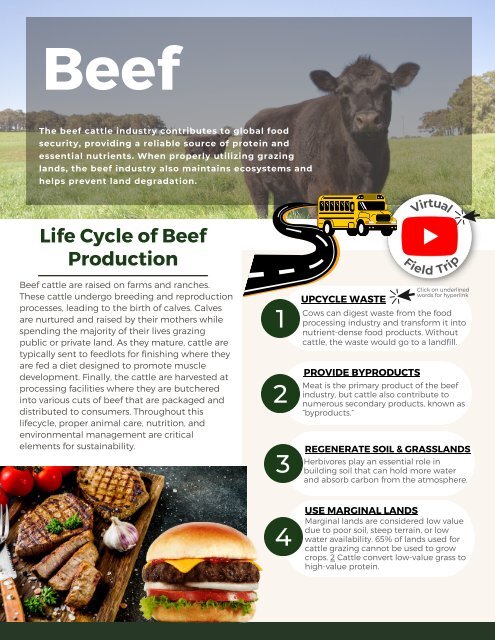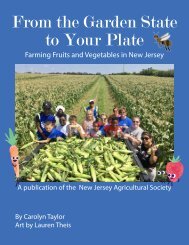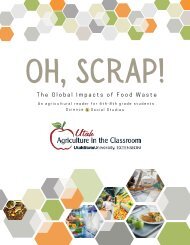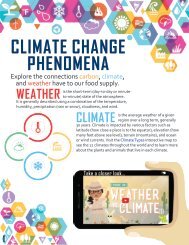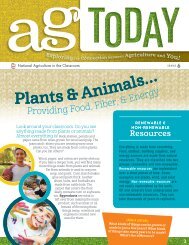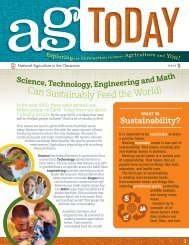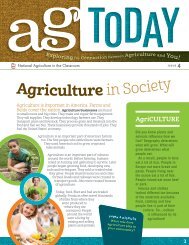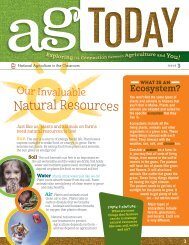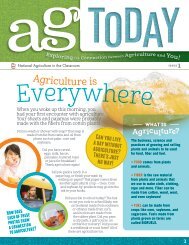Livestock Production
Create successful ePaper yourself
Turn your PDF publications into a flip-book with our unique Google optimized e-Paper software.
Beef<br />
The beef cattle industry contributes to global food<br />
security, providing a reliable source of protein and<br />
essential nutrients. When properly utilizing grazing<br />
lands, the beef industry also maintains ecosystems and<br />
helps prevent land degradation.<br />
Virtual<br />
Life Cycle of Beef<br />
<strong>Production</strong><br />
Field Trip<br />
Beef cattle are raised on farms and ranches.<br />
These cattle undergo breeding and reproduction<br />
processes, leading to the birth of calves. Calves<br />
are nurtured and raised by their mothers while<br />
spending the majority of their lives grazing<br />
public or private land. As they mature, cattle are<br />
typically sent to feedlots for finishing where they<br />
are fed a diet designed to promote muscle<br />
development. Finally, the cattle are harvested at<br />
processing facilities where they are butchered<br />
into various cuts of beef that are packaged and<br />
distributed to consumers. Throughout this<br />
lifecycle, proper animal care, nutrition, and<br />
environmental management are critical<br />
elements for sustainability.<br />
1<br />
2<br />
3<br />
UPCYCLE WASTE<br />
PROVIDE BYPRODUCTS<br />
Click on underlined<br />
words for hyperlink<br />
Cows can digest waste from the food<br />
processing industry and transform it into<br />
nutrient-dense food products. Without<br />
cattle, the waste would go to a landfill.<br />
Meat is the primary product of the beef<br />
industry, but cattle also contribute to<br />
numerous secondary products, known as<br />
“byproducts.”<br />
REGENERATE SOIL & GRASSLANDS<br />
Herbivores play an essential role in<br />
building soil that can hold more water<br />
and absorb carbon from the atmosphere.<br />
4<br />
USE MARGINAL LANDS<br />
Marginal lands are considered low value<br />
due to poor soil, steep terrain, or low<br />
water availability. 65% of lands used for<br />
cattle grazing cannot be used to grow<br />
crops. 2 Cattle convert low-value grass to<br />
high-value protein.


